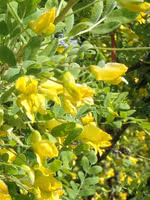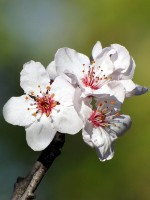Mon-Fri 9am - 5pm Mountain time
Common Caragana vs Western Sand Cherry
Caragana arborescens
Prunus pumila var besseyi
NOT AVAILABLE THIS SEASON - MIGHT RETURN
Common Caragana is a fast growing shrub that's known for its exceptional hardiness and drought tolerance. Although it's most commonly planted in shelterbelts, Common Caragana is also an excellent hedge or feature shrub.
Note: in warmer areas, this species can be difficult to contain once planted. Use the right plant in the right place.
Western Sand Cherry is known for its unique, leathery grey-green foliage and beautiful white blossoms. It is a popular ornamental shrub in parks and front yards. Both you and the wildlife will love its edible small dark red to purple cherries.
Due to its small stature and spreading qualities, Western Sandcherry is suitable as an underplanting or groundcover.
Many people graft plum and cherry varieties to Western Sand Cherry and use it as rootstock. It is also popular to graft hardy apricots to.
Common Caragana Quick Facts
Western Sand Cherry Quick Facts
In row spacing: 0.3 m (1.0 ft)

